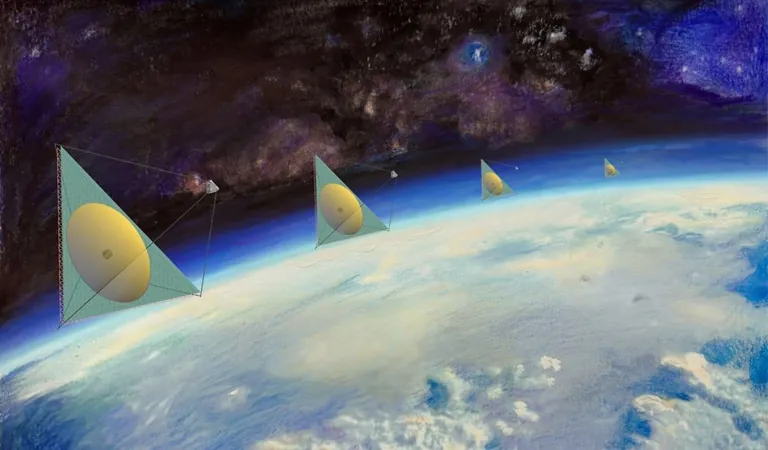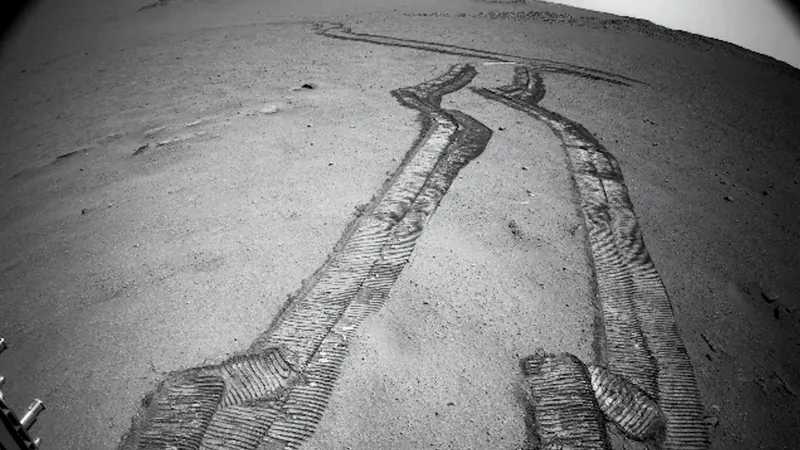
Revolutionary Space Telescopes: The Future of Astronomy May Reside in Flexible Surfaces!
2024-11-03
Author: Wei Ling
Introduction
Space-based telescopes offer unparalleled views of the cosmos, unencumbered by atmospheric distortions that plague ground-based instruments. They are capable of capturing stunningly detailed images of distant galaxies, stars, and other celestial phenomena. However, a significant limitation persists in the size of their mirrors. For instance, while the James Webb Space Telescope boasts an impressive 6.5-meter primary mirror, it had to be ingeniously designed with foldable components to fit within a launch vehicle. In stark contrast, the Extremely Large Telescope currently being constructed in northern Chile will feature a staggering 39-meter mirror. So, why not launch a similarly massive mirror into space? A groundbreaking study is exploring how this could be achieved.
Revolutionary Concepts in Telescope Design
The essence of telescope mirrors lies in their reflective surfaces; they do not necessarily have to be made from thick glass or supported by a hefty frame. In theory, a mere thin sheet of reflective material could suffice. Imagine being able to roll up a 40-meter aluminum foil mirror for launch – it sounds feasible, doesn’t it?
Engineering Challenges
Nevertheless, the practicalities of deploying such a structure into space are multifaceted. The membrane telescope would need to be unrolled into its designated shape and equipped with a detector to focus the incoming light. Furthermore, maintaining alignment between the detector and the expansive reflective surface is crucial for optimal performance. Assuming all these engineering challenges are overcome, another question remains: how do we prevent deformation of the thin mirror over time, even in the vacuum of space?
Maintaining Mirror Shape
Interestingly, the study highlights that once unfurled in space, the thin membrane could retain its shape adequately. However, for the telescope to deliver crystal-clear images, it must maintain precise focal adjustments, akin to what the Hubble Space Telescope initially lacked. Its mirror’s shape was so critically flawed that it required a dedicated mission just to make corrections.
Adaptive Optics in Space
To overcome similar challenges, the authors propose a revolutionary adaptation of the well-established concept of adaptive optics, typically employed in ground telescopes to mitigate atmospheric distortions. Adaptive optics utilizes a system of actuators to continually adjust the mirror's shape, counteracting the natural turbulence of the atmosphere. However, launching a mechanical actuator system for a membrane telescope seems counterproductive.
Innovative Solutions: Radiative Adaptive Optics
What if we explored an alternative approach? Enter the innovative idea of laser projection! By utilizing laser beams to reshape the mirror through radiative recoil, astronomers could achieve real-time optical corrections on the flexible surface. This groundbreaking technique, termed radiative adaptive optics, has been successfully demonstrated through laboratory experiments, indicating promising potential for space applications.
Future Prospects
While executing this technology amidst the complexities of deep space poses additional challenges, the initial findings are encouraging. With further development, we might be on the brink of a new era in astronomy, potentially launching an array of flexible membrane telescopes that could unveil celestial secrets yet unseen.
Conclusion
The future of space exploration lies ahead, and who knows what wonders await us in the expansive universe? Keep your eyes on the stars – the evolution of telescope technology could soon lead us to uncharted territories in the cosmos!




 Brasil (PT)
Brasil (PT)
 Canada (EN)
Canada (EN)
 Chile (ES)
Chile (ES)
 España (ES)
España (ES)
 France (FR)
France (FR)
 Hong Kong (EN)
Hong Kong (EN)
 Italia (IT)
Italia (IT)
 日本 (JA)
日本 (JA)
 Magyarország (HU)
Magyarország (HU)
 Norge (NO)
Norge (NO)
 Polska (PL)
Polska (PL)
 Schweiz (DE)
Schweiz (DE)
 Singapore (EN)
Singapore (EN)
 Sverige (SV)
Sverige (SV)
 Suomi (FI)
Suomi (FI)
 Türkiye (TR)
Türkiye (TR)